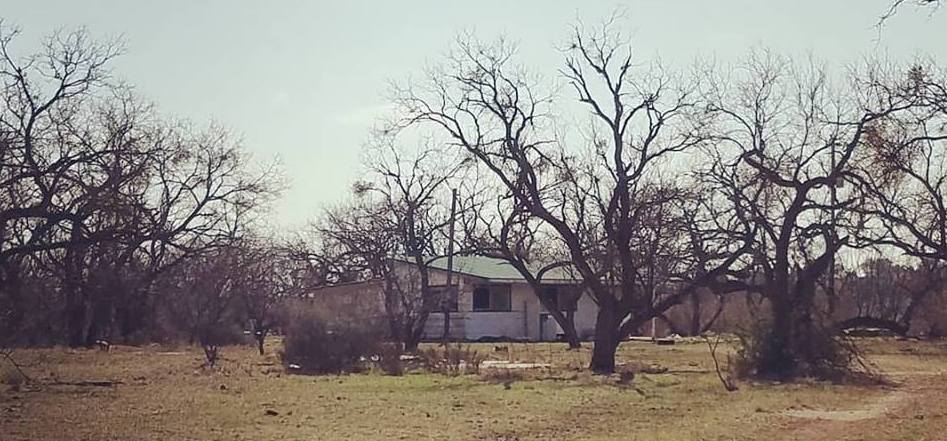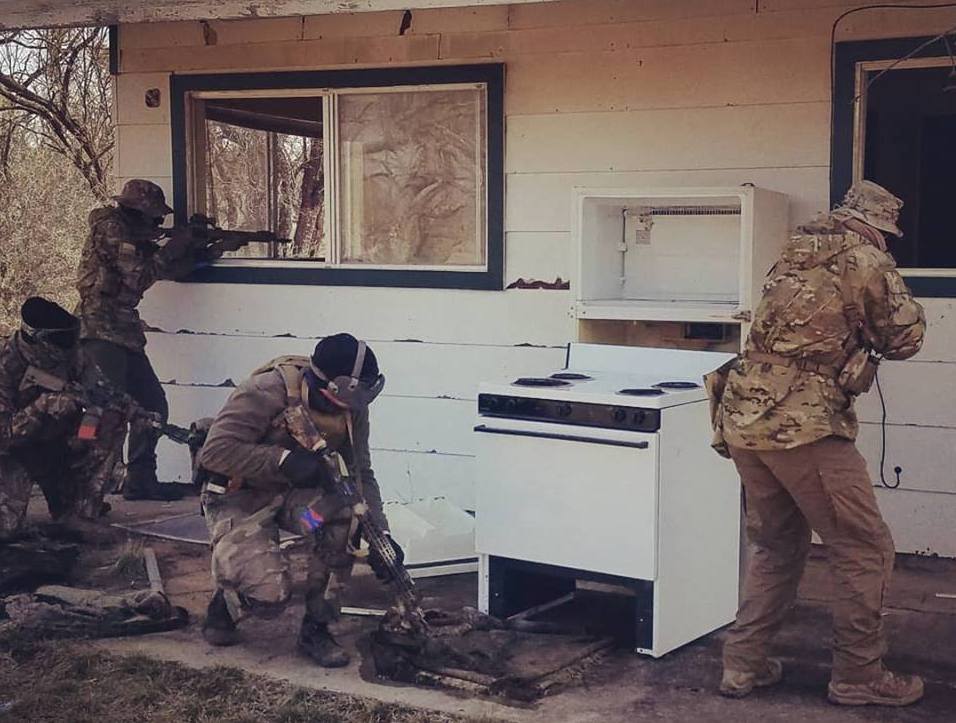HEAT 2 Texas
This is a review of the HEAT 2 class conducted in Brady, Texas, 2/24/18-3/1/18.
By way of background, I attended HEAT 1 (the class formerly known as Combat Team Tactics) and Mobility Operations in Texas in 2017. I also attended the One Day CQB Intro class in Missouri in 2017. I have been to several pistol, carbine, and precision rifle classes. I also have a fair amount of police-based CQB training.
The first day of the class was a review of the basic bounding and peeling drills learned in HEAT 1, although Max did introduce a six man arrowhead patrol formation, as well as the “MOVE/FIRE” concept while bounding forward. I was relieved to learn that I was still able to do the drills after a full year with only a few chances to practice.
The second day of the class began with a Rhodesian-style cover shooting exercise. This same drill also introduced the concept of bounding forward as buddy pairs during the assault through an enemy position; previously, we had only trained to assault through the position on line. Max had mentioned this variant of the attack at HEAT 1, but deemed that we did not have the experience to pull it off safely. I was happy to be able to try this method of attacking, although it took us several tries to get it right.
We ended the live fire portion of the day early, in order to prepare for the recon patrol section of the class. After a thorough lecture, the more experienced members of the class were assigned to be the OPFOR guarding the lodge where we were sleeping. The remainder of the class, myself included, were assigned to perform both a long distance reconnaissance during daylight, and a close target reconnaissance after dark.
My three man team didn’t do so well during the daylight reconnaissance. Due to poor route selection, we were spotted while trying to move around the lodge, and the OPFOR sent a foot patrol after us. However, this was actually something of a confidence builder for me: when the OPFOR spotted us, rather than freezing up, we immediately rolled into a break contact drill and withdrew to the rear. Because we had drilled the break contact drills so much in HEAT 1, everybody knew the drill to perform without any orders or coordination.
We had more success during the close target reconnaissance after dark. Two buddy pairs were able to penetrate within 50 yards of the lodge without being detected, despite roving foot and vehicle patrols equipped with night vision. I did not have night vision, but the moon was so bright we were able to navigate from our patrol rally point to the lodge and back without any difficulty. I was pleased at being able to navigate in the dark, and also at the opportunity to practice crawling up to the lodge without being detected.
The next day was Ambush Day, which began with another thorough lecture. I never realized the level of control and attention to detail needed to set a proper ambush before. After lunch, we moved to the live fire range and ran the ambush four times on a combination of fixed and pop up targets. All of these drills were supervised by Max, but the leadership of the squad was done by students. In the last two drills, Max began to introduce some free play elements, in the form of enemy counterattacks and friendly casualties. It was at this point that the quality of previous training began to show.
In 2017, on the last day of Mobility Operations, the introduction of free play elements led to total chaos and epic failure. The squad was unable to work together, and there was no leadership or coordination; Max eventually had to step in and tell us what to do.
This time was very different. The pop up enemy counterattacked while the squad was trying to withdraw from the position. Largely without being told, the squad redeployed into line and suppressed the targets, while flanking elements broke contact and pulled back to the main body. On the next iteration, we sustained a casualty, followed by an enemy counterattack. Once again, part of the squad suppressed the counterattack, while the remainder pulled the “wounded” man to safety, tourniquetted his wound, and loaded him onto a litter. It was extremely gratifying to work with a squad who were able to work together smoothly and efficiently, and speaks to the quality of the previous training.
The next day was Raid Day, the final day of live fire. We began with a repeat of the hasty squad attack drill first learned at the end of HEAT 1. This employed the basic principle of using one part of the squad to suppress an enemy position, allowing the other team to maneuver onto a flank and assault the position. In the afternoon, we practiced a raid on an enemy position – the same basic tactic, but employing the element of surprise.
On day five, we began the CQB portion of the class, at the aptly named House of Woe, an abandoned house several miles from the lodge. The first day was spent on the basic maneuvers of CQB, including room entries and basic team movements inside a structure. By the end of the day we had progressed to live firing with UTM rounds on paper targets inside the house.

Day six was the capstone of the whole class for me. The entire day was given over to Force on Force drills in and around the House of Woe.
I will digress briefly to explain my philosophy of Force on Force training. I have done a fair amount of it, in both private and law enforcement contexts, and I like to compare it to boxing training. To continue the analogy: shooting on the square range is akin to practicing punches on a heavy bag – it is necessary and has value, but if all you do is hit the heavy bag, you aren’t learning how to fight. Live fire and movement training off the square range is a step up – more like having a trainer hold focus mitts for you to punch. But it is still not a fight. You aren’t fighting until you’re facing another man who is trying to hit you as hard as you are trying to hit him. Likewise, you aren’t really practicing fighting with a rifle until there is another man with a rifle shooting at you. Thus, Force on Force training occupies the same place as live sparring. It is live sparring for gunfighters.
The first several iterations of Force on Force had a team of 6 assaulting the house held by a team of 3. The OPFOR was confined to the house, but was able to fire outwards, so quality fire and movement was required to even get close to the house. On the first run, only two of the attacking force survived as far as the door. Both were hit entering the structure. This was a lightbulb moment for me: when we viewed the house as a CQB problem, and tried to apply only CQB techniques to solve it, we got slaughtered. This was one of the biggest limitations of my previous training: in police CQB training, we almost never consider the approach to the house. The scenario begins at the door, and only CQB techniques are ever applied.

As the day wore on, the attackers got better and better. After three or four iterations, we were able to approach the house and kill everyone inside, with the loss of only one or two members of the attacking force. The key to succeeding in the scenario turned out to be good team movements outside the structure, and suppressing the house from the outside windows before making entry.
At this point, we switched to a “capture the flag” scenario, with two roughly equal teams starting away from the house and trying to move in and capture it. This was my favorite part. It was less CQB oriented, and more classic SUT, which gave us a chance to practice our team and individual movements. The highlight of the day came when my team of four defeated an opposing team of five. One buddy pair engaged them from one corner of the house, while my partner and I peeled around their flank and attacked, rolling them up.
Throughout the FoF day, as students we continued to work well together. Everybody had a level of tactical competence, there were no ego problems, and the chosen leaders did a great job of stepping up and leading. Interestingly, we did the same “capture the flag” scenarios at the 1 Day CQB Intro class in May 2017, and it was a complete goat rodeo. We had no coordination, no leadership, no plan, and were unable to execute any of the basic SUT movements, let alone more complex CQB maneuvers. Having a well-trained, well coordinated team made all the difference.
At this point everyone was running out of UTM ammunition, so we ended with a couple of every-man-for-himself free for all rounds, and returned to the lodge to pack up and leave.
I thoroughly enjoyed HEAT 1, and I learned a lot; but HEAT 2 was truly amazing and extremely rewarding. HEAT 1 teaches basic movements, and HEAT 2 is where you are able to apply the techniques into real world problems. The FoF was an absolute blast, and the confidence boost from successfully applying SUT techniques against live, resisting opponents is huge. I am looking forward to the Combat Leader Course!
On the fourth evening after class, wheelsee and Max put on a impromptu bonus TC3 class. I got more from this than I have from 8 hours of LEO TC3 training.
I can’t close without saying a few words about the food and fellowship. Having the whole class living and eating together and hanging out in the evenings made it a really fun time. One of the class brought some of the best steaks I have ever eaten. One night we even had a viewing of the movie “Contact”, with live commentary and English to American translation by Max.
All in all, this was an incredible class; a great group of guys; and an amazing experience all around. I can’t wait to do it again in 2019!
Dave P.
